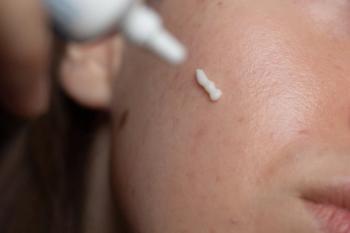
Bridging the Gaps in Lichen Planus Treatment: Emerging Therapies and Clinical Realities
In part 2 of this conversation, Adam Friedman, MD, FAAD, discusses new data on lichen planus treatment trends, unmet needs, and the promise of innovative therapies.
In the second part of his conversation with Dermatology Times, Adam Friedman, MD, FAAD, professor and chair of dermatology at the George Washington University School of Medicine and Health Sciences, discusses what dermatologists are using to treat lichen planus and where the treatment landscape still falls short.
The new data come from a recent cross-sectional survey published in Dermatology and Therapy1-2 that explored how more than 400 dermatology clinicians manage lichen planus, a chronic inflammatory condition with no FDA-approved therapies.
Now, in part 2, Friedman turns his attention to therapeutic choices: what clinicians are using, what’s missing, and why change is on the horizon.
“From our study, we know that the majority of dermatologists or residents or APPs are using topical corticosteroids—over 90%—as well as some of the non-steroidal options like calcineurin inhibitors [and] PDE4 inhibitors,” Friedman explained. “So that’s great for mild disease.”
But once the disease becomes moderate to severe, treatment practices become more variable.
Room to Grow in Systemic Management
Although oral retinoids like acitretin and isotretinoin have shown promise for more severe cases of lichen planus, the study found that many dermatology clinicians are still not utilizing these options widely.
“We actually ran a similar study several years ago that we presented at an annual AAD meeting,” Friedman noted. “The number of individuals who said they were using oral retinoids…practically doubled from several years ago. So A+ on that front, but still a lot of work to be done.”
Among oral immunosuppressants, methotrexate was reported as the most frequently used option. Yet even this choice is overshadowed by newer, more targeted therapies that remain largely inaccessible or underutilized.
“We are in an era of really fun toys,” Friedman said, referring to the emergence of biologics, JAK inhibitors, and other small-molecule treatments. “There is growing evidence that targeting interleukin-17 [and] JAK inhibition could be very potent with respect to managing moderate to severe disease with probably less baggage than some of the traditional oral immunosuppressants.”
Despite this promise, very few survey respondents reported using these advanced agents.
Access, Approval, and Awareness
The absence of FDA-approved options for lichen planus remains a hurdle, leaving clinicians to rely heavily on off-label use. Even with these incremental advances, the question remains: How can the dermatology community do better?
Friedman believes the solution lies in organized collaboration.
“I think that comes down to us taking the initiative, maybe forming a society, or at least some type of task force-ish thing, that really relies on expertise to push out the right information that is based on the evidence to our colleagues,” he said.
That call to action echoes his earlier remarks about the “wild west” nature of lichen planus care. While enthusiasm for new tools is building, standardized guidelines remain absent. Until then, Friedman is encouraging his peers to stay curious, stay informed, and advocate for progress.
“There’s still a lot of work to be done,” he said. “But I’m hopeful.”
References
- Study reveals gaps in screening and treatment practices for a chronic inflammatory skin condition among US dermatologists. News release. George Washington University. April 25, 2025. Accessed June 2, 2025.
https://mediarelations.gwu.edu/study-reveals-gaps-screening-and-treatment-practices-chronic-inflammatory-skin-condition-among-us - Vidal SI, Menta N, Friedman A. Lichen planus: a cross-sectional evaluation of US dermatologists’ comorbidity screening and management patterns. Dermatol Ther (Heidelb). 2025;15:1455–1465.
doi:10.1007/s13555-025-01422-1 .
Newsletter
Like what you’re reading? Subscribe to Dermatology Times for weekly updates on therapies, innovations, and real-world practice tips.


















